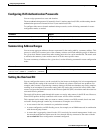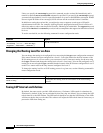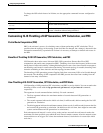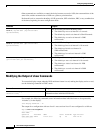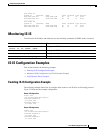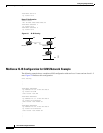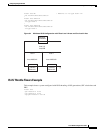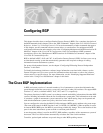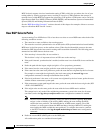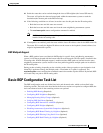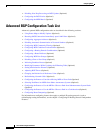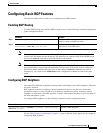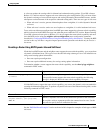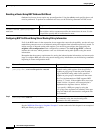
IPC-293
Cisco IOS IP Configuration Guide
Configuring BGP
This chapter describes how to configure Border Gateway Protocol (BGP). For a complete description of
the BGP commands in this chapter, refer to the “BGP Commands” chapter of the Cisco IOS IP Command
Reference, Volume 2 of 3: Routing Protocols. To locate documentation of other commands that appear
in this chapter, use the command reference master index, or search online. For multiprotocol BGP
configuration information and examples, refer to the “Configuring Multiprotocol BGP Extensions for IP
Multicast” chapter of the Cisco IOS IP Configuration Guide. For multiprotocol BGP command
descriptions, refer to the “Multiprotocol BGP Extensions for IP Multicast Commands” chapter of the
Cisco IOS IP Command Reference.
BGP, as defined in RFCs 1163 and 1267, is an Exterior Gateway Protocol (EGP). It allows you to set up
an interdomain routing system that automatically guarantees the loop-free exchange of routing
information between autonomous systems.
For protocol-independent features, see the chapter “Configuring IP Routing Protocol-Independent
Features” in this book.
To identify the hardware platform or software image information associated with a feature, use the
Feature Navigator on Cisco.com to search for information about the feature or refer to the software
release notes for a specific release. For more information, see the “Identifying Supported Platforms”
section in the “Using Cisco IOS Software” chapter in this book.
The Cisco BGP Implementation
In BGP, each route consists of a network number, a list of autonomous systems that information has
passed through (called the autonomous system path), and a list of other path attributes. We support BGP
Versions 2, 3, and 4, as defined in RFCs 1163, 1267, and 1771, respectively.
The primary function of a BGP system is to exchange network reachability information with other BGP
systems, including information about the list of autonomous system paths. This information can be used
to construct a graph of autonomous system connectivity from which routing loops can be pruned and
with which autonomous system-level policy decisions can be enforced.
You can configure the value for the Multi Exit Discriminator (MED) metric attribute using route maps.
(The name of this metric for BGP Versions 2 and 3 is INTER_AS_METRIC.) When an update is sent to
an internal BGP (iBGP) peer, the MED is passed along without any change. This action enables all the
peers in the same autonomous system to make a consistent path selection.
A next hop router address is used in the NEXT_HOP attribute, regardless of the autonomous system of
that router. The Cisco IOS software automatically calculates the value for this attribute.
Transitive, optional path attributes are passed along to other BGP-speaking routers.



